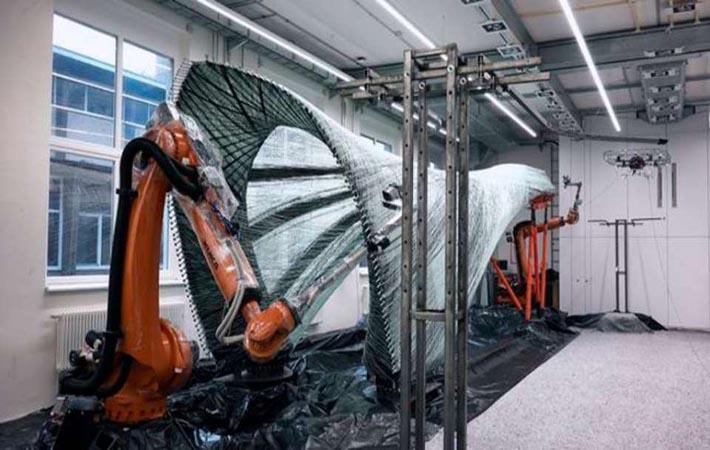The Institute for Computational Design and Construction and the Institute of Building Structures and Structural Design at the University of Stuttgart are researching a novel production process for architectonic structures based on 50k fibres. They are using SGL Group’s Sigrafil 50k carbon fibre, often used as basis for applications in mobility and energy.
An initial installation from the project can currently be seen on the University of Stuttgart’s inner courtyard. For this endeavour, 104 kilometres of carbon fibres were provided and delivered from company’s Moses Lake site in the state of Washington to Stuttgart.The Institute for Computational Design and Construction and the Institute of Building Structures and Structural Design at the University of Stuttgart are researching a novel production process for architectonic structures based on 50k fibres. They are using SGL Group's Sigrafil 50k carbon fibre, often used as basis for applications in mobility and energy.#
The focus of the project is investigating natural biological construction processes of long span fibre composite structures. Serving as a model were the larvae of the apple leaf miner moth (“Lyonetia Clerkella”), which spin cocoons on cherry and apple tree leaves using long threads of fibre. Researchers at the Institute for Computational Design and Construction (ICD) and the Institute of Building Structures and Structural Design (ITKE) together with students of the master study programme ITECH, are now trying to apply this special technique to the construction of architectonic structures made of carbon-glass-fibre-reinforced composites and develop a new production process based for fibre composite constructions.
As carbon fibres are lightweight and have a high tensile strength, a radically different approach becomes possible involving new production processes with multiple robot systems that communicate with each other, precisely processing the fibres while handling high tension forces. This approach enables a scalable production process for long span fibre composite constructions as they could be used in architectural design in the future.
“In this case, we use the glass fibres purely as a formwork on which we apply the carbon fibres. Loads in parts subject to both tension and pressure are primarily transferred through the carbon fibres. With its long spanning cantilever form, this year’s pavilion places a special focus on the options offered by this material,” says Benjamin Felbrich, research assistant at the ICD.
Andreas Wuellner, head of the business unit Composites - Fibres and Materials (CFM) of SGL Group: “For us as a company the continuous development of production processes of carbon fibres is an important topic, that’s why we are having a lively exchange with the project team at the University of Stuttgart. Furthermore, the construction of the pavilion is a stress test in practice for our fibre and demonstrates its’ unique characteristics.” (SV)
Fibre2Fashion News Desk – India


